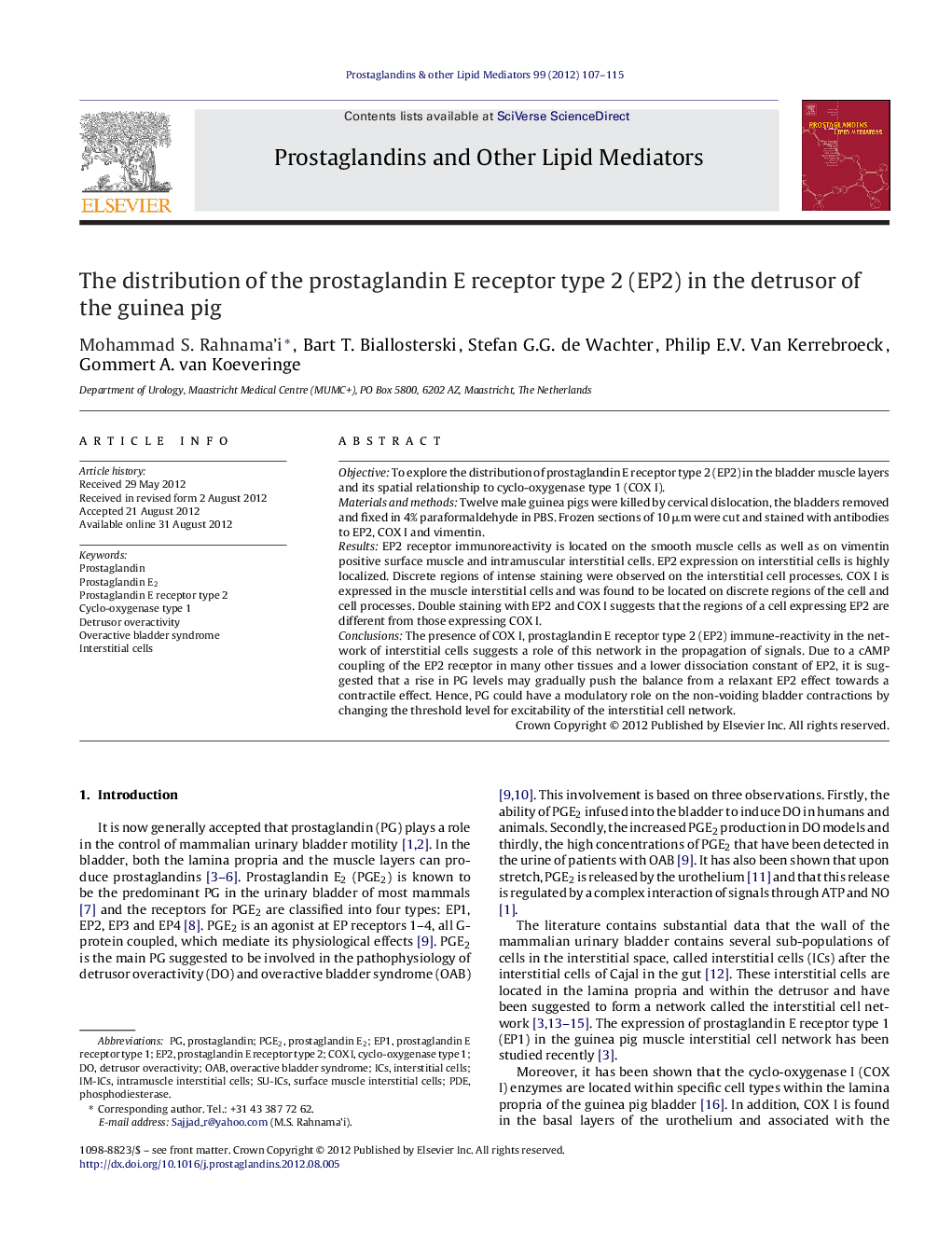| Article ID | Journal | Published Year | Pages | File Type |
|---|---|---|---|---|
| 2019783 | Prostaglandins & Other Lipid Mediators | 2012 | 9 Pages |
ObjectiveTo explore the distribution of prostaglandin E receptor type 2 (EP2) in the bladder muscle layers and its spatial relationship to cyclo-oxygenase type 1 (COX I).Materials and methodsTwelve male guinea pigs were killed by cervical dislocation, the bladders removed and fixed in 4% paraformaldehyde in PBS. Frozen sections of 10 μm were cut and stained with antibodies to EP2, COX I and vimentin.ResultsEP2 receptor immunoreactivity is located on the smooth muscle cells as well as on vimentin positive surface muscle and intramuscular interstitial cells. EP2 expression on interstitial cells is highly localized. Discrete regions of intense staining were observed on the interstitial cell processes. COX I is expressed in the muscle interstitial cells and was found to be located on discrete regions of the cell and cell processes. Double staining with EP2 and COX I suggests that the regions of a cell expressing EP2 are different from those expressing COX I.ConclusionsThe presence of COX I, prostaglandin E receptor type 2 (EP2) immune-reactivity in the network of interstitial cells suggests a role of this network in the propagation of signals. Due to a cAMP coupling of the EP2 receptor in many other tissues and a lower dissociation constant of EP2, it is suggested that a rise in PG levels may gradually push the balance from a relaxant EP2 effect towards a contractile effect. Hence, PG could have a modulatory role on the non-voiding bladder contractions by changing the threshold level for excitability of the interstitial cell network.
► EP2 receptor immunoreactivity is located on guinea pig detrusor smooth muscle cell. ► EP2 receptor is located on surface muscle and intra-muscular interstitial cells. ► EP2 staining shows intense discrete regions on the interstitial cell processes. ► COX I is expressed in the guinea pig muscle interstitial cells. ► The regions of a interstitial cell expressing EP2 and COX I are different.
